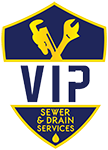
Flooding is a natural disaster that can have devastating consequences for homeowners. Beyond the immediate dangers posed by rising water levels, one often overlooked aspect is the potential contamination of drinking water sources. When floods strike, they can compromise water quality, exposing residents to a host of health risks. In this article, we will explore the various ways flooding can lead to water contamination and discuss the crucial steps individuals and communities should take to ensure the safety of their water supply.
The Aftermath of Flooding
Floodwaters can wreak havoc on infrastructure, disrupting sewage systems, contaminating wells, and compromising water treatment facilities. The severity of contamination depends on several factors, including the source of flooding, the type of water bodies affected, and the existing infrastructure in place. Floodwaters may carry a range of contaminants, including bacteria, viruses, chemicals, and debris, making it imperative to assess and address potential risks to public health.
Bacterial and viral contamination. One of the primary concerns during flooding is the increased risk of bacterial and viral contamination. Floodwaters often pick up harmful microorganisms from various sources, such as sewage systems, agricultural runoff, and industrial areas. Pathogens like E. coli, giardia, and norovirus can proliferate in contaminated water, leading to waterborne illnesses.
Sewage system overflows. Floodwaters can overwhelm sewage systems, causing raw sewage to overflow into streets, rivers, and other water bodies. This poses a significant threat to water quality as sewage contains a cocktail of harmful bacteria and viruses. Residents who rely on well water may be particularly vulnerable if their wells become contaminated with sewage during a flood.
Chemical contamination. In addition to biological contaminants, flooding can introduce a variety of chemicals into the water supply. Industrial sites, agricultural areas, and storage facilities can release hazardous substances. These chemicals may include pesticides, fertilizers, heavy metals, and industrial pollutants, all of which can have serious health consequences when present in drinking water.
Wells and groundwater contamination. Many homeowners rely on wells for their water supply. Unfortunately, wells are susceptible to contamination during floods as surface water can infiltrate the groundwater, carrying pollutants with it. Wells located in flood-prone areas are at a higher risk of becoming contaminated, jeopardizing the safety of the water they provide.
Addressing the Threat: Testing and Monitoring
In the aftermath of a flood, it is crucial for individuals and communities to take proactive measures to assess the safety of their water supply. Regular testing and monitoring are essential components of a comprehensive water safety plan. Testing should cover a broad spectrum of contaminants, including bacteria, viruses, and chemicals. Local health departments and environmental agencies often provide guidance on water testing procedures and may offer assistance to communities affected by flooding.
Boiling Water: A Temporary Solution
In situations where water contamination is suspected, boiling water is a recommended precautionary measure. Boiling water for at least one minute can kill most bacteria and viruses, reducing the risk of waterborne illnesses. However, boiling is not effective against chemical contaminants, and it is a temporary solution until the water can be properly tested and treated.
Water Treatment Options
Depending on the nature and extent of contamination, various water treatment methods may be employed to restore water quality. Filtration systems, disinfection with chlorine or other chemicals, and activated carbon treatments are among the options available. In some cases, homeowners may need to rely on alternative water sources or emergency water distribution until their regular water supply is deemed safe.
Community Action and Preparedness
Community-wide collaboration is essential in addressing water contamination after a flood. Local authorities, environmental agencies, and community organizations should work together to implement emergency response plans, educate residents on water safety practices, and coordinate testing and treatment efforts. Regular drills and preparedness initiatives can help communities respond effectively to water-related emergencies.
Individual Responsibility
On an individual level, residents must take responsibility for their water safety. Staying informed about the risks of water contamination during flooding and following guidelines from health authorities is crucial. This includes avoiding the consumption of untreated water from potentially contaminated sources and adhering to any boil water advisories issued by local authorities.
Proactive and Preventative Measures
Homeowners can take preventative measures to reduce the risk of damage due to flooding.
-
- Proper maintenance. Ensuring proper maintenance of gutters and downspouts is a simple yet effective preventive measure. Clearing debris regularly ensures unobstructed water flow, preventing potential backups that could lead to flooding.
- Sump Pump Installation. Installing sump pumps with battery backups adds an extra layer of protection by automatically removing excess water from basements during heavy rainfall or flooding caused by a burst pipe.
- Get Flood Insurance. Investing in flood insurance is another crucial step. Standard homeowners’ insurance typically does not cover flood damage, making specialized flood insurance essential. This financial safety net can aid in the recovery process by covering repair and replacement costs for items damaged in a flood.
- Waterproof your property. Waterproofing measures, such as sealants and coatings, can fortify vulnerable points like basement walls and windows against water infiltration.
Flooding emergencies pose multifaceted challenges, with water contamination being a significant concern. The aftermath of a flood requires a comprehensive approach to assess, address, and mitigate the risks associated with contaminated water. By staying informed, implementing proactive measures, and working together, individuals and communities can navigate the threat of water contamination and ensure the availability of safe drinking water in the wake of a flooding emergency.


